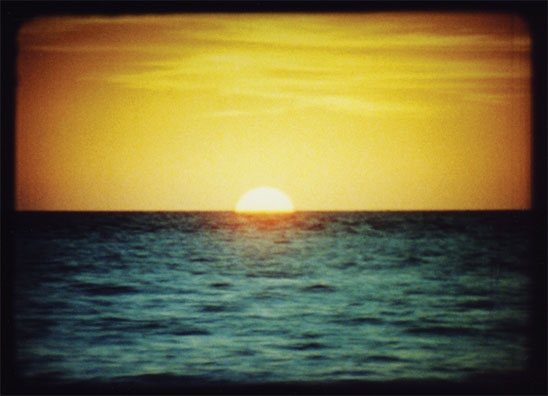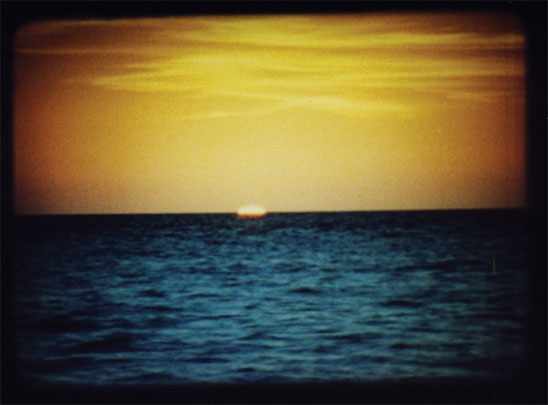Tacita Dean, The Green Ray

Tacita Dean, The Green Ray, 2001, still from color film in 16mm silent, 2 1/2 minutes.
TD: In America they call it the green flash. When the sun sets, in a very clear horizon, with no land mass for many hundreds of miles, and no moisture or atmospheric pressure, you have a good chance of seeing it. The slowest ray is the blue ray, which comes across as green when the sun sets in perfect atmospheric conditions. It’s the last ray as the sun recedes with the curvature of the earth. Like a pulse on the horizon. It’s totally fractional, though it can last longer.
The bizarre thing is that I filmed The Green Ray in Madagascar, and then in the same month, I had to fly back from Washington for an exhibition. On my Lufthansa airplane back, while we were nearing the coast of Ireland, everyone else was asleep and I got up and looked out the window across three sleeping bodies, and just at that moment the sun rose above a very sharply defined cloud, and it was the most extraordinary green ray. I mean, not like the one I have on my film, I mean a real . . . and it lingered . . . a second of emerald before the sun rose. I was so shocked, having this whole wait for it in Madagascar and then actually getting to see it so vividly. To see such a full-blooded green ray—

Tacita Dean, The Green Ray, 2001, still from color film in 16mm silent, 2 1/2 minutes.
JE: Does it last longer if you’re airborne?
TD: Probably. People see it at sea. I think air pilots must see it more often. To see it from land is unusual.
—Tacita Dean interviewed by Jeffrey Eugenides in Bomb (Spring 2006)




